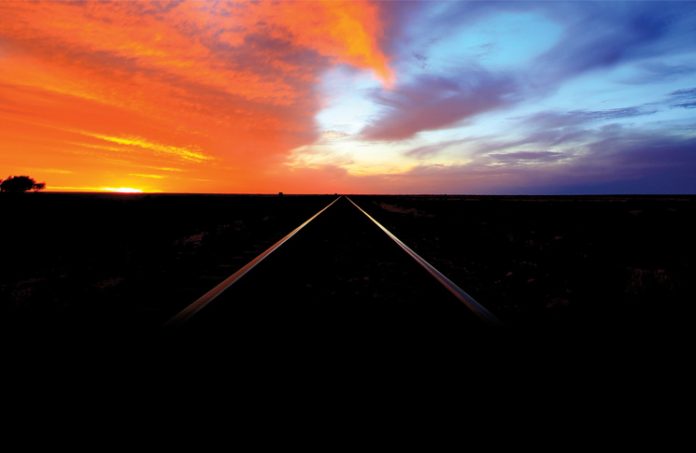Pressing on and on as the sky gets very dark—what could possibly go wrong?
By Greg Ackman
We had departed Kalgoorlie with 20 minutes margin to land at Rawlinna before last light if the weather was not suitable on our first leg across the Nullabor to Forrest.
Initially we had a five-knot tailwind as we headed east, with the sun receding behind us. The almost three-hour leg to Forrest was forecast to be a clear sky with a quartering moon, which was perfect for a flight across featureless terrain at night with no ground lighting. This was my first night crossing of the Nullabor and looked to be routine, a piece of cake and an ideal night VFR exercise.
Forrest is an exception to the rule as there is no alternate for this airport because it is so isolated. It has lights, NDB and has been a designated RPT alternate for at least the last 40 years.
Rawlinna, at 250 nm from Kalgoorlie, was an easy two-hour leg. My phone call earlier had confirmed with the caretaker that the runway was serviceable and we were welcome for the night if we had to stop over. Rawlinna was previously a railway town and home to hundreds of workers who serviced the great iron road that spanned the continent. Now it was just a few air-conditioned huts with a runway and the only desalination plant for 1000 miles. It was a key waypoint for us as it was the go/no-go point before last light for the final 90 nm leg to Forrest, our midpoint refuelling stop.
After almost two hours, the monotony of following the rail line had given way to concern that Rawlinna was not appearing on the horizon as expected. My concern with this situation, which clearly meant we had picked up a headwind, was exacerbated by an overcast that now covered 7/8 ths ths of the sky. With just enough fuel to do a 180-degree turn and head back to Kalgoorlie, I pressed on, not even considering going back as an alternative.
Fifteen minutes later we arrived at Rawlinna in the dark—with no runway lights, no radio comms with the ground and an unlit 300-foot radio tower located in the centre of the airfield. In an orbit at 1000 feet, I reviewed my options and realised my only port of call was now Forrest Airport, 90 nm east. Off we headed, with the moon shining on the rails making a perfect ribbon leading us on.
Settling down at 1000 feet, we set economy cruise for the next 45-minute leg. It was now getting very dark and the only light was coming intermittently from the moon as it peaked periodically through the developing overcast conditions.
We were okay as Forrest had runway lights, a rotating beacon, NDB and an aerodrome reporting officer (ARO) with a ground radio. I started doing some calculations and realised we had a 28-knot headwind!
Presently it started to get darker and as it was already night, there was some confusion until we realised the overcast was thickening. Within 10 minutes it was so dark we couldn’t tell if we were upright or upside down. Absolutely no outside references sent a chill up my spine as I started an instrument scan to remain under control. What could I do, as it was so dark I couldn’t even see the propeller spinning?
The rail line! Hopefully it was still under us, so I began a gentle decent and at 200 feet, turned on the landing light. I was rewarded with two dim strips of light reaching out into the darkness ahead.
For the next 20 minutes we sat transfixed to the slim guide, praying the landing light would not fail. By now it was overcast down to 500 feet and solid. All I had to do was keep the aircraft level and steady at 200 feet.
By now we were really scared and I started to review my options. I called ‘any station’ on 121.5 MHz and was rewarded with a Qantas 767 over Alice Springs responding. I asked him to call Melbourne Centre and request the ARO to activate the airport beacon.
A few minutes later a ping of white light intermittently broke the enveloping dark. For the next 30 minutes, that light became our only hope and salvation in a sea of black.
We landed at Forrest with shaking legs and relief that the black night hadn’t ruined our day, through the grace of God and a wonderful white beacon of light from the middle of nowhere.
Lessons learnt: I now know that I should have done a 180 when Rawlinna hadn’t appeared and immediately gone back to Kalgoorlie. I was too preoccupied with reaching my destination when I should have been considering what the actual situation was and examined all my options. It could have been a fatal mistake!



It sure is in the middle of nowhere and would not end well if you did run out of options. Glad it did end well though.
Night flight is great fun but sure needs a lot more attention than day. It’s easy to underestimate the danger just as with a water crossing. You really are at the mercy of the machine your in and the actions or decisions you make.
Thanks for sharing your experience Greg, it’s a great reminder .
Happy flying 👍
Rawlinna is 200nm from Kalgoorlie, not 250nm.
When you arrived in the dark you still had 144nm to go to Forrest, not 90nm.
You are correct – turning back would have been a very good idea !
I surmise this was pre GPS. Did you have a TAF for Forrest? I wouldnt consider flying at night in marginal weather. However, you came out unscathed and better educated. Thanks for sharing.
Hey Greg! love your mobile one antenna’s, Glad you survived to make another mobile One another day, Cheers, Barry, VK2FP